-
 Bitcoin
Bitcoin $107,631.9817
-1.73% -
 Ethereum
Ethereum $2,739.1787
-4.61% -
 Tether USDt
Tether USDt $1.0000
-0.01% -
 XRP
XRP $2.2427
-3.30% -
 BNB
BNB $664.0527
-0.73% -
 Solana
Solana $158.0902
-5.38% -
 USDC
USDC $0.9998
-0.01% -
 Dogecoin
Dogecoin $0.1876
-7.78% -
 TRON
TRON $0.2753
-3.21% -
 Cardano
Cardano $0.6820
-5.55% -
 Hyperliquid
Hyperliquid $43.0171
-0.38% -
 Sui
Sui $3.3308
-4.87% -
 Chainlink
Chainlink $14.3431
-7.89% -
 Avalanche
Avalanche $21.0266
-6.48% -
 Bitcoin Cash
Bitcoin Cash $437.7657
-1.56% -
 Stellar
Stellar $0.2746
-2.52% -
 UNUS SED LEO
UNUS SED LEO $8.8665
-1.96% -
 Toncoin
Toncoin $3.1885
-3.37% -
 Shiba Inu
Shiba Inu $0.0...01260
-6.84% -
 Hedera
Hedera $0.1686
-4.93% -
 Litecoin
Litecoin $88.8406
-5.16% -
 Polkadot
Polkadot $4.0542
-6.28% -
 Monero
Monero $322.5806
-4.20% -
 Ethena USDe
Ethena USDe $1.0004
-0.02% -
 Bitget Token
Bitget Token $4.7089
-3.10% -
 Dai
Dai $0.9998
-0.01% -
 Pepe
Pepe $0.0...01206
-9.06% -
 Uniswap
Uniswap $7.8694
-5.20% -
 Pi
Pi $0.6232
-2.68% -
 Aave
Aave $301.3815
-3.83%
How to use DMI indicator to identify the critical value of trend strength and potential turning point?
Use DMI to assess trend strength in crypto trading: ADX above 40 signals strong trends, while +DI/-DI crossovers indicate potential reversals.
Jun 09, 2025 at 01:07 am
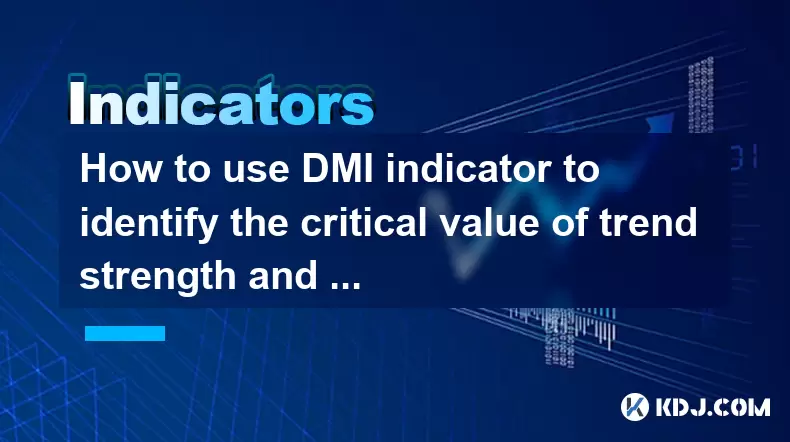
The Directional Movement Index (DMI) is a popular technical analysis tool used by traders in the cryptocurrency market to assess the strength of a trend and identify potential turning points. Comprising three lines—the Positive Directional Indicator (+DI), the Negative Directional Indicator (-DI), and the Average Directional Index (ADX)—the DMI helps traders make informed decisions about entering or exiting trades. In this article, we will explore how to use the DMI indicator to identify the critical value of trend strength and potential turning points in the context of cryptocurrency trading.
Understanding the Components of the DMI Indicator
The DMI indicator consists of three main components, each serving a specific purpose in analyzing market trends.
- +DI (Positive Directional Indicator): This line measures the upward movement in the price of an asset. A rising +DI suggests that buyers are gaining control and the market is experiencing bullish momentum.
- -DI (Negative Directional Indicator): Conversely, the -DI measures the downward movement in the price. An increasing -DI indicates that sellers are dominating the market, leading to bearish momentum.
- ADX (Average Directional Index): The ADX line quantifies the strength of the trend, regardless of its direction. A high ADX value indicates a strong trend, while a low value suggests a weak or non-existent trend.
Setting Up the DMI Indicator on Your Trading Platform
To effectively use the DMI indicator, you need to set it up correctly on your trading platform. Here's how you can do it:
- Choose a Reliable Trading Platform: Ensure that your trading platform supports the DMI indicator. Popular platforms like TradingView, MetaTrader, and Binance offer this tool.
- Add the DMI Indicator: Navigate to the indicators section of your platform and search for the DMI or ADX indicator. Add it to your chart.
- Adjust the Settings: The default settings for the DMI are usually set to a 14-period moving average. You can adjust this to suit your trading strategy, but for most cryptocurrency traders, the default setting works well.
Identifying Trend Strength with the ADX Line
The ADX line is crucial for understanding the strength of a trend in the cryptocurrency market. Here's how you can interpret the ADX values:
- ADX Below 20: This indicates a weak trend or a ranging market. In such conditions, it might be best to avoid trend-following strategies and consider range-bound trading strategies.
- ADX Between 20 and 40: This suggests a moderate trend strength. Traders might consider entering trades in the direction of the trend but should remain cautious.
- ADX Above 40: A value above 40 indicates a strong trend. This is a good time to consider trend-following strategies, as the market is likely to continue in the current direction.
Using +DI and -DI to Identify Potential Turning Points
The +DI and -DI lines help traders identify potential turning points in the market. Here's how you can use them effectively:
- Crossovers: When the +DI crosses above the -DI, it signals a potential bullish trend reversal. Conversely, when the -DI crosses above the +DI, it suggests a bearish trend reversal might be imminent.
- Divergence: Look for divergences between the +DI or -DI and the price action. For instance, if the price is making higher highs but the +DI is making lower highs, it could signal a weakening bullish trend and a potential reversal.
- Confirmation with ADX: Always confirm the signals from +DI and -DI with the ADX. If the ADX is rising alongside a crossover, it adds more weight to the potential trend change.
Applying DMI to Cryptocurrency Trading Strategies
Incorporating the DMI into your cryptocurrency trading strategy can enhance your decision-making process. Here are some practical ways to apply the DMI in trading:
- Trend Following: Use the ADX to identify strong trends and enter trades in the direction of the trend. For example, if the ADX is above 40 and the +DI is above the -DI, consider buying Bitcoin or another cryptocurrency.
- Reversal Trading: Look for crossovers between +DI and -DI to identify potential trend reversals. For instance, if the -DI crosses above the +DI and the ADX is rising, it might be a good time to short a cryptocurrency.
- Risk Management: Use the DMI to set stop-loss orders. For example, if you enter a long position based on a bullish crossover, set your stop-loss below the recent swing low, as indicated by the -DI.
Combining DMI with Other Indicators
While the DMI is a powerful tool on its own, combining it with other indicators can provide more robust trading signals. Here are some complementary indicators to consider:
- Moving Averages: Use moving averages to confirm the trend direction indicated by the DMI. For instance, if the DMI suggests a bullish trend and the price is above a long-term moving average, it strengthens the bullish signal.
- Relative Strength Index (RSI): The RSI can help identify overbought or oversold conditions. If the DMI indicates a strong trend and the RSI confirms it by not being in overbought or oversold territory, it can provide additional confidence in the trade.
- MACD (Moving Average Convergence Divergence): The MACD can help confirm trend reversals indicated by the DMI. If the DMI shows a crossover and the MACD confirms it with a similar crossover, it increases the likelihood of a successful trade.
Practical Example: Using DMI to Trade Bitcoin
Let's walk through a practical example of using the DMI to trade Bitcoin. Assume you're monitoring the Bitcoin chart on a daily timeframe:
- Step 1: Observe the ADX: You notice that the ADX has been rising and is currently above 40, indicating a strong trend.
- Step 2: Analyze +DI and -DI: The +DI is above the -DI, suggesting a bullish trend.
- Step 3: Confirm with Price Action: The price of Bitcoin is making higher highs and higher lows, confirming the bullish trend.
- Step 4: Enter the Trade: Based on the DMI signals and price action, you decide to enter a long position on Bitcoin.
- Step 5: Set Stop-Loss and Take-Profit: You set your stop-loss below the most recent swing low and your take-profit at a resistance level identified on the chart.
Frequently Asked Questions
Q1: Can the DMI be used for short-term trading in the cryptocurrency market?
Yes, the DMI can be used for short-term trading by adjusting the period settings to a shorter timeframe, such as 5 or 10 periods. This will make the indicator more responsive to short-term price movements, but be aware that it may also increase the number of false signals.
Q2: Is the DMI effective for all cryptocurrencies, or does it work better with specific ones?
The DMI can be applied to any cryptocurrency, but its effectiveness may vary based on the liquidity and volatility of the specific asset. It tends to work well with highly liquid cryptocurrencies like Bitcoin and Ethereum, where trends are more pronounced.
Q3: How often should I check the DMI indicator when trading cryptocurrencies?
The frequency of checking the DMI depends on your trading timeframe. For day traders, checking the DMI every few hours on shorter timeframes (like 1-hour or 4-hour charts) can be beneficial. For swing traders, checking it daily or weekly on longer timeframes (like daily or weekly charts) is more appropriate.
Q4: Can the DMI be used in conjunction with automated trading bots?
Yes, the DMI can be integrated into automated trading bots. Many trading platforms and bot software allow you to program the DMI indicator into your trading algorithms to execute trades based on its signals. However, ensure that you backtest your strategy thoroughly to account for potential false signals and market volatility.
Disclaimer:info@kdj.com
The information provided is not trading advice. kdj.com does not assume any responsibility for any investments made based on the information provided in this article. Cryptocurrencies are highly volatile and it is highly recommended that you invest with caution after thorough research!
If you believe that the content used on this website infringes your copyright, please contact us immediately (info@kdj.com) and we will delete it promptly.
- Expert Predicts When Bitcoin (BTC) Price Could Hit a New All-Time High
- 2025-06-13 02:00:20
- US President Donald Trump Virtually Spoke at the Coinbase State of Crypto Summit
- 2025-06-13 02:00:20
- Arctic Pablo Coin (APC) Explodes Onto the Meme Coin Stage as One of the Top New Meme Coins for Exponential Returns
- 2025-06-13 01:55:12
- Litecoin (LTC) Price Nosedives as Bollinger Bands Signal Lingering Bearish Sentiment
- 2025-06-13 01:55:12
- DeFi Development Corp. (DFDV) Secures $5 Billion Equity Line of Credit from RK Capital Management
- 2025-06-13 01:50:12
- Tether Expands Gold Strategy with Stake in Elemental Altus Royalties
- 2025-06-13 01:50:12
Related knowledge
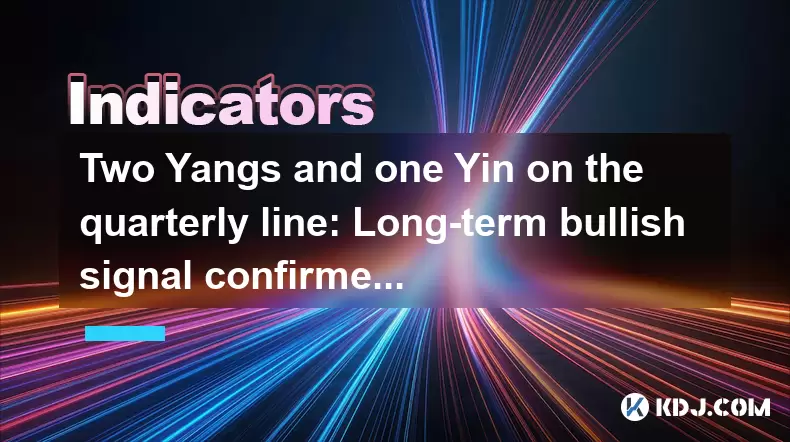
Two Yangs and one Yin on the quarterly line: Long-term bullish signal confirmed?
Jun 12,2025 at 07:00am
Understanding the 'Two Yangs and One Yin' Candlestick PatternIn technical analysis, candlestick patterns play a pivotal role in identifying potential market reversals or continuations. The 'Two Yangs and One Yin' pattern is one such formation that traders often observe on longer timeframes like the quarterly chart. This pattern consists of two bullish (...
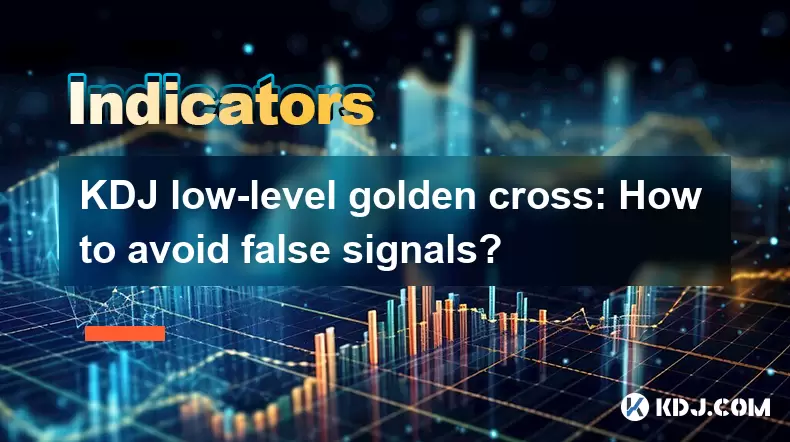
KDJ low-level golden cross: How to avoid false signals?
Jun 12,2025 at 08:21am
Understanding the KDJ IndicatorThe KDJ indicator, also known as the stochastic oscillator, is a momentum-based technical analysis tool widely used in cryptocurrency trading. It consists of three lines: the %K line (fast stochastic), the %D line (slow stochastic), and the %J line (divergence value). These lines oscillate between 0 and 100, helping trader...

Bottom-up volume stagnation: Is it accumulation or heavy selling pressure?
Jun 12,2025 at 01:42pm
What Is Bottom-Up Volume Stagnation?Bottom-up volume stagnation refers to a specific pattern observed in cryptocurrency trading charts where the price of an asset moves sideways or slightly downward, and trading volume remains consistently low over an extended period. This phenomenon is often seen after a sharp price drop or during a prolonged bear mark...
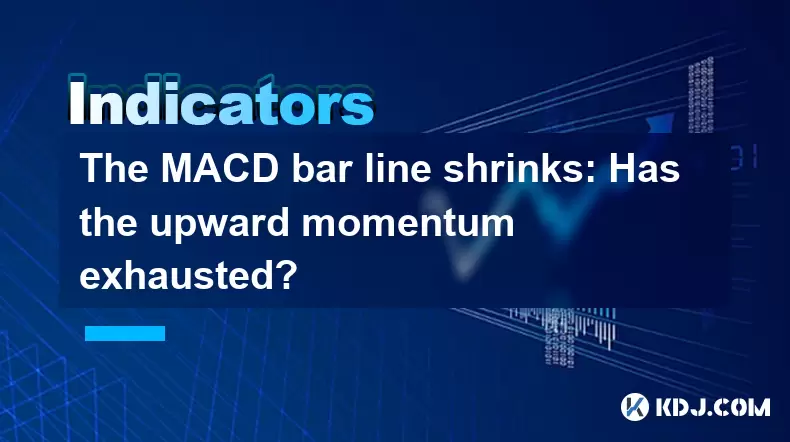
The MACD bar line shrinks: Has the upward momentum exhausted?
Jun 12,2025 at 12:49am
Understanding the MACD Bar LineThe Moving Average Convergence Divergence (MACD) is a widely used technical indicator in cryptocurrency trading. It consists of three main components: the MACD line, the signal line, and the MACD histogram (also known as the bar line). The MACD bar line represents the difference between the MACD line and the signal line. W...

The chip peak moves up: Is the main force quietly shipping?
Jun 12,2025 at 01:01am
Understanding the Chip Peak Movement in Cryptocurrency MiningIn recent years, the chip peak movement has become a critical topic within the cryptocurrency mining community. This phrase typically refers to the point at which mining hardware reaches its maximum efficiency and output capacity. When this peak shifts upward, it often signals changes in the s...
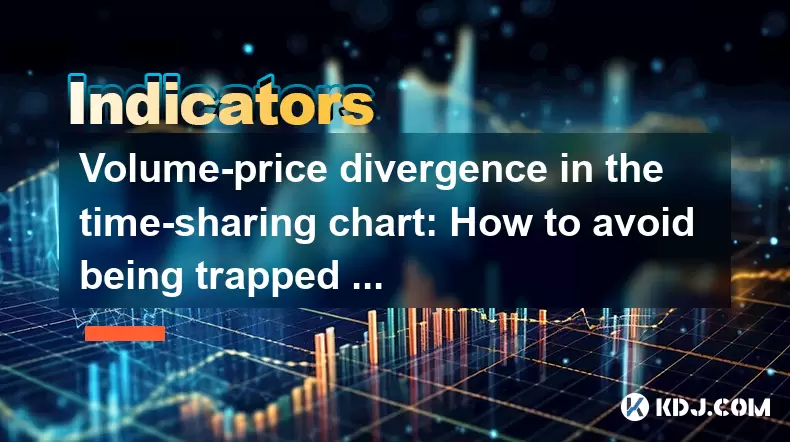
Volume-price divergence in the time-sharing chart: How to avoid being trapped on the same day?
Jun 12,2025 at 07:28pm
Understanding Volume-Price Divergence in Cryptocurrency TradingVolume-price divergence is a critical concept in technical analysis, especially within the fast-moving world of cryptocurrency trading. It refers to a situation where price movement and trading volume move in opposite directions. For instance, if the price of a cryptocurrency is rising while...

Two Yangs and one Yin on the quarterly line: Long-term bullish signal confirmed?
Jun 12,2025 at 07:00am
Understanding the 'Two Yangs and One Yin' Candlestick PatternIn technical analysis, candlestick patterns play a pivotal role in identifying potential market reversals or continuations. The 'Two Yangs and One Yin' pattern is one such formation that traders often observe on longer timeframes like the quarterly chart. This pattern consists of two bullish (...

KDJ low-level golden cross: How to avoid false signals?
Jun 12,2025 at 08:21am
Understanding the KDJ IndicatorThe KDJ indicator, also known as the stochastic oscillator, is a momentum-based technical analysis tool widely used in cryptocurrency trading. It consists of three lines: the %K line (fast stochastic), the %D line (slow stochastic), and the %J line (divergence value). These lines oscillate between 0 and 100, helping trader...

Bottom-up volume stagnation: Is it accumulation or heavy selling pressure?
Jun 12,2025 at 01:42pm
What Is Bottom-Up Volume Stagnation?Bottom-up volume stagnation refers to a specific pattern observed in cryptocurrency trading charts where the price of an asset moves sideways or slightly downward, and trading volume remains consistently low over an extended period. This phenomenon is often seen after a sharp price drop or during a prolonged bear mark...

The MACD bar line shrinks: Has the upward momentum exhausted?
Jun 12,2025 at 12:49am
Understanding the MACD Bar LineThe Moving Average Convergence Divergence (MACD) is a widely used technical indicator in cryptocurrency trading. It consists of three main components: the MACD line, the signal line, and the MACD histogram (also known as the bar line). The MACD bar line represents the difference between the MACD line and the signal line. W...

The chip peak moves up: Is the main force quietly shipping?
Jun 12,2025 at 01:01am
Understanding the Chip Peak Movement in Cryptocurrency MiningIn recent years, the chip peak movement has become a critical topic within the cryptocurrency mining community. This phrase typically refers to the point at which mining hardware reaches its maximum efficiency and output capacity. When this peak shifts upward, it often signals changes in the s...

Volume-price divergence in the time-sharing chart: How to avoid being trapped on the same day?
Jun 12,2025 at 07:28pm
Understanding Volume-Price Divergence in Cryptocurrency TradingVolume-price divergence is a critical concept in technical analysis, especially within the fast-moving world of cryptocurrency trading. It refers to a situation where price movement and trading volume move in opposite directions. For instance, if the price of a cryptocurrency is rising while...
See all articles

























































































